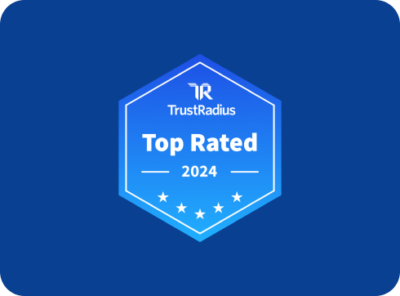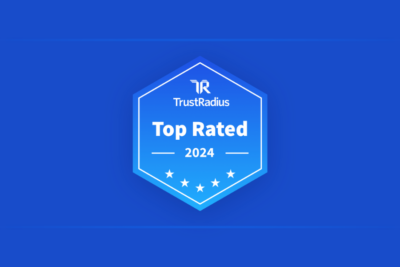
How to Tie Your Customer Marketing Programs to Business Outcomes
The idea of customer marketing is often an afterthought for organizations—either overlooked by most of the company or haphazardly tacked onto other marketing strategies. But, it shouldn’t be. Dedicating the right level of focus to customer marketing has the potential to change the trajectory of an organization’s business outcomes and boost growth in a way that many other sales and marketing plays can’t.
However, some aspects of customer marketing seem daunting. For one, what does it look like to do “customer marketing” in the first place? Plus, how do you gain buy-in, budget, and commitment from other departments? How do you use the data collected from your customer marketing efforts to drive outcomes and ROI for the rest of the business?
TrustRadius’ Scott Douglas, Director of Account Management, had the opportunity to discuss these topics with customer marketing experts at the 2022 Customer Marketing Summit this past June in Las Vegas, NV. He facilitated a panel with Andrew Sevillia, Senior Director of Customer Marketing & Advocacy at Near; Amanda Elam, Chief Marketing Officer at Bloomreach; and Shannon Cardwell, Peer Review Program Manager at IBM. Their panel delved into the practical aspects of building out a customer marketing program: scoping out an action plan, integrating customer marketing with other departments, and more.
How is customer marketing defined?
Customer marketing definitions can vary between organizations, but generally speaking, it focuses on relating to customers in two different ways:
Install-based marketing
This focuses on your current customers: how your organization can make their experiences better and maintain relationships with them. It also includes a focus on retention and expansion opportunities.
Advocacy marketing
This facet of customer marketing works to gather social proof and elevate the voice of the customer in order to benefit the rest of the organization’s efforts. According to Shannon, the goal of advocacy marketing is to “take a customer’s experience, all of their positives and negatives, and really elevate that story and pull it through your entire marketing funnel.”
Andrew summarized customer marketing as being all about relationship-building.
“It’s about finding opportunities to gain trust so that you or [your] customers are open to sharing their experience: the good and the bad. All of that information can be harnessed for product improvement, for activating your customer success, and your support.”
How does customer marketing relate to other departments?
Customer marketing doesn’t exist in a vacuum—it impacts the whole organization. Think sales, demand generation, digital marketing, product marketing, content marketing, and product. Because the information collected by customer marketing programs is so powerful, it can be leveraged across many disciplines.
“There is a value prop for every single discipline that you are going to go talk to within your organization. So whether you’re talking to product marketing who’s really trying to understand their end user and how their product is being used and those most valuable use cases, [or] you’re talking to someone in digital who is focusing specifically on SEO and web page optimization and buyer behavior, or you’re talking to someone in demand gen who needs to create good opportunities and see that pipeline progress—there is a value prop for these programs with those people.” Shannon
What do you prioritize first when building out a customer marketing program?
Customer marketing is a new discipline. This means that often, customer marketing practitioners don’t have anything to reference when they strategize within their own organizations. The panel of experts discussed this and covered a few ways that they found guidance in knowing how to start each of their organizations’ customer marketing initiatives.
Being present on peer review sites. Andrew’s team focused on putting rich content on their company profile for each of these sites (e.g. adding call-to-action (CTA) buttons) and finding ways to track leads coming from these places.
Starting small and getting quick wins. Shannon’s team decided that their “quick win” would be to focus on creating a digital workstream. Their top priority was to obtain customer quotes on a regular basis, and then syndicate all of the content to one page of their website (they actually used our TrustQuotes API to accomplish all of this)! Although they just focused on one webpage and its metrics, this quick win was a great way to prove ROI and obtain buy-in from the rest of the marketing team.
Structuring KPIs to focus on customers first. It might seem self-explanatory, but the most successful customer marketing programs truly focus on the customers first. It’s not about what you can get from your customers, but what you can give them to make their experience with your brand better. Amanda’s team at Bloomreach sets this straight by tracking KPIs like, “How many conferences did we ask them to speak at? How many certifications did we help them get? How many awards have we helped our customers win? How do we help them be celebrated and be rock stars in their own right? Because that remaining focus on the customer being the celebrity is super important.”
How do you leverage the customer voice throughout the rest of your organization?
The panelists outlined why it’s important to leverage the customer voice throughout the organization. First off, social proof legitimizes what you’re saying about your own product and brand. Customer marketing might have been a nice add-on to marketing 20 years ago, but nowadays, backing your own claims with the customer’s voice is a must. This means that sales and demand generation need to leverage the customer voice to win new customers.
Plus, today’s buyers are self-educating, rather than speaking with sales reps. In fact, our 2022 B2B Buying Disconnect report found that virtually 100% of buyers want to self-serve part or all of their buying journeys. And as they look for self-service resources during this process, buyers want to see digital resources that display social proof in a succinct way. Because of this, departments like digital marketing and product marketing need to utilize social proof as they develop self-service resources for buyers to learn more about products and/or services.
It’s also important for other departments to realize that the voice of the customer isn’t just for one stage of the buyer’s journey—it needs to be interjected at different stages of your customer life cycle. Bloomreach, for instance, requires every executive team member to meet with customers a certain number of times each month. This ensures customer centricity comes from the top down and is part of the company’s culture.
How do you collect social proof in the first place?
Leveraging the voice of the customer is all well and good, but how do you actually collect it?
Shannon explained her team’s approach to this challenge.
“We knew that customer voice and customer interactions were happening across the business, but very much in silos. And we knew that there was an opportunity to streamline that work and make it more effective if we were to centralize all those efforts into one. And that’s what we’ve done. So, we have a dedicated lead for review generation that’s just focused on running campaigns to bring in those customer reviews on a regular basis across all of our important offerings. We also have a digital lead, who again, is focused on infusing those stories—those testimonials—in all of the places where they can have the most impact.” (25:56-26:31)
Amanda’s team scales their social proof by utilizing technology to collect customer quotes through quick surveys and incentives, along with challenges and rewards to encourage sales teams to collect these quotes. Their team worked with TrustRadius to collect higher volumes of reviews.
Collecting reviews is undoubtedly hard, but Andrew’s team was able to find success by including a CTA to fill out a review that popped up once his organization’s SaaS customers logged into their product portal. His key tip: “Put the opportunity to write a review right where your customers already are, as opposed to trying to bring them to you.”
What is a trend, a tool, etc. that your organization uses that changes the way you’ve addressed customer marketing?
The panelists brought up a list of favorites inside their customer marketing toolbox. Their top picks:
Intent data for reducing churn.
Customer marketers can benefit from using intent data to identify who’s interested in their products or their competitors. This way, they can look at who might be researching alternatives besides their own products and be able to make targeted efforts to retain these customers.
TrustRadius offers downstream intent data for customer marketers to leverage in identifying and reducing churn. Our powerful data shows who’s visiting your TrustRadius profile, as well as other profiles in your same category.
Marketing automation for segmentation.
The team at Bloomreach uses Hubspot in order to segment their audiences and build customer outreach programs. This allows them to serve tailored content to their existing customers, similar to how demand generation teams work with prospects.
TrustRadius also provides ways to integrate intent data with ABM programs, such as Hubspot and Demandbase.
Tools for using non-owned channels.
Amanda particularly focused on how her team leverages non-owned channels to join conversations with existing users. In her words, “How do we really begin to learn and engage in non-owned channels and the conversations that are happening with users and practitioners? And I know I keep talking about that. But it is top of mind for me, particularly in this category of marketing. And where do we begin to insert and support and validate conversations that are happening in our space?”
Although customer marketing is a new kind of mindset and practice, it can make a huge impact on your business’s bottom line and boost the efforts of several facets of sales/marketing. It’s more efficient and cost-effective to retain and grow current customers than to only be chasing new logos. You can also learn a lot from your customers, which can influence business strategy and turn them into your best marketing and sales channel. If you’d like to hear more, be sure to check out the full panel discussion.
If you’d like to learn more about how TrustRadius helps customer marketers align to business outcomes, check out our resource page here.





